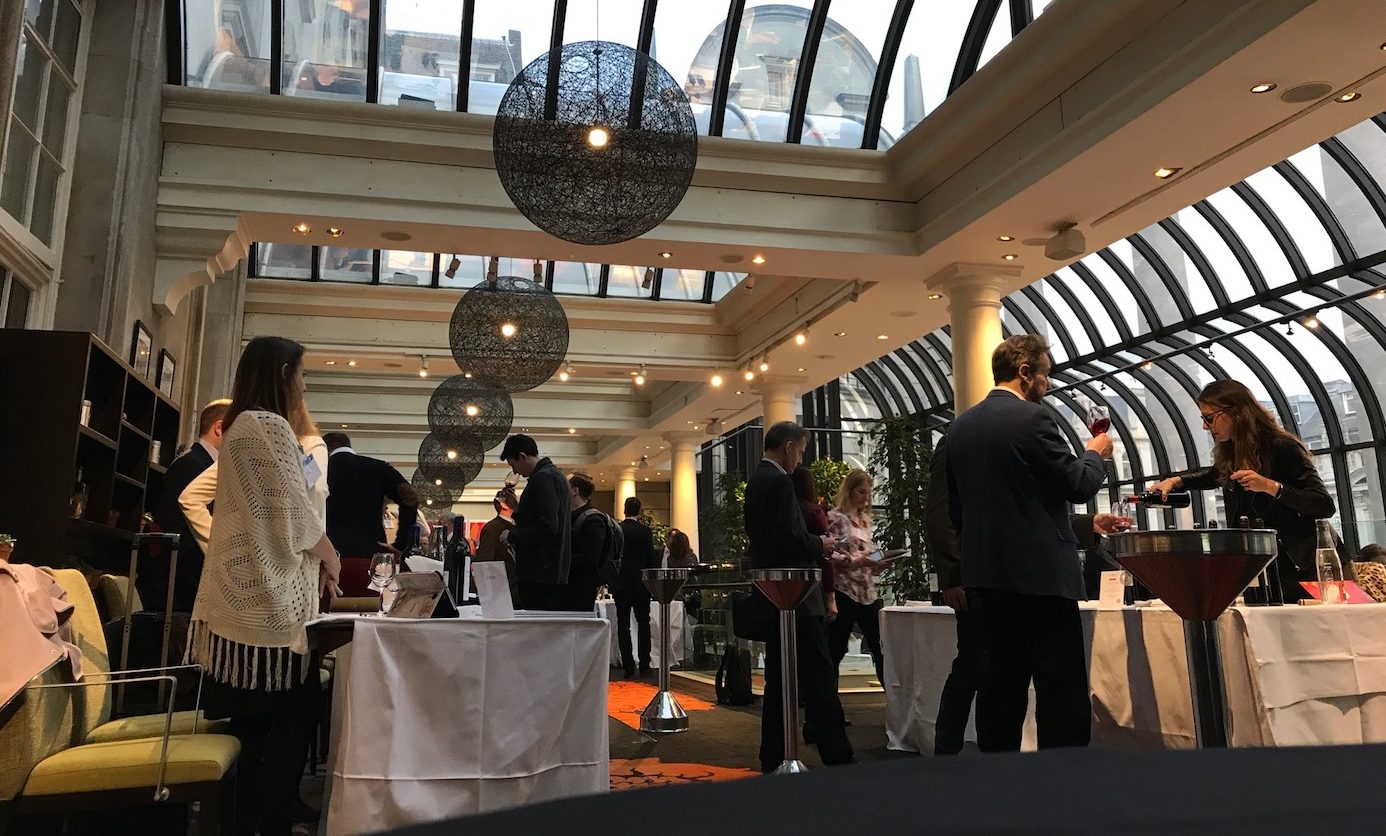The Grand Cercle tasting is the perfect snapshot of the new Bordeaux 2017 vintage, all under one roof, all in one evening without having to travel between châteaux.
The Grand Cercle aims to showcase and promote affordable Bordeaux wines from 142 properties, with around 50 from the Left Bank. Producers and wines are judged on their quality alone and not their history and where their vines just happen to be. The most expensive wines in its group will only be around €30 to €35 mark which makes it ideal for the on-trade.

“The Buyer?” Alain Château from Château Yon-Figeac peers at my name badge, “We need some of those.”
After a couple of outstanding vintages in 2015 and 2016 , it’s unfortunately the turn of Bordeaux to be meted out some poor fortune with Bordeaux 2017 – a late April frost reducing harvests by up to 100% in some cases. It is impossible not to start a review of Bordeaux 2017 with news of how badly affected the quantities are.
“What was the 2017 harvest like?” repeats Thierry Gaudrie of Château Villars, “Let’s just say that it was very fresh on the 27th of April.”
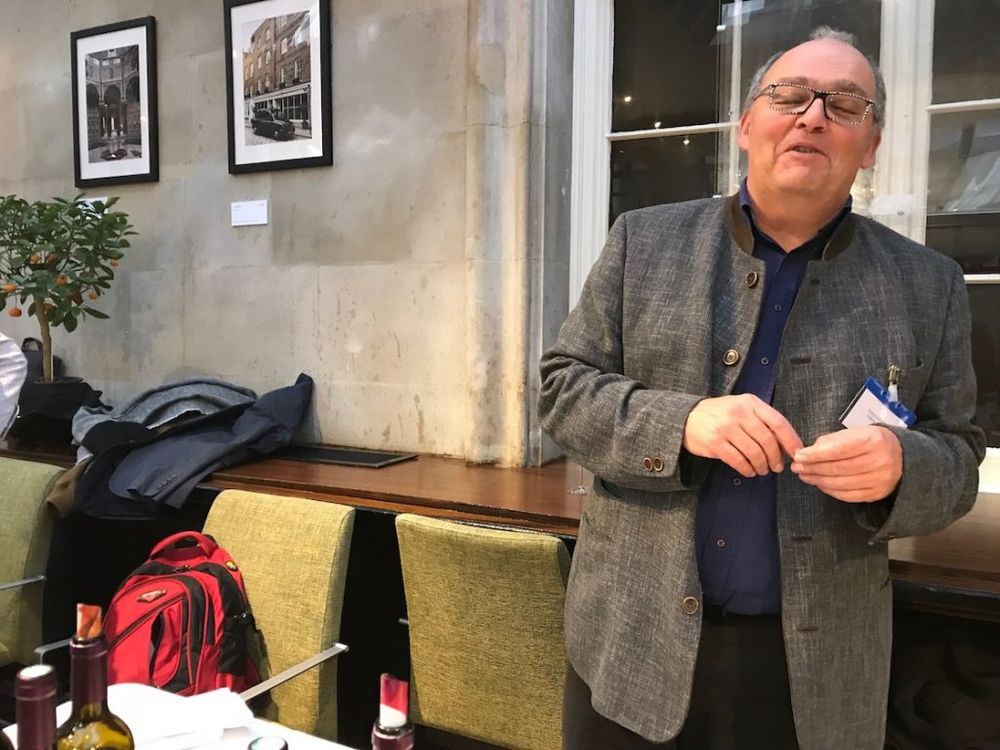
Thierry Gaudrie of Château Villars: 50% of his harvest he will be selling to a négociant as bulk wine
Of the 44 estates showing their new wines (out of the Grand Cercle des Vins de Bordeaux’s 142 châteaux) almost all reported considerable shortfalls, with most electing to produce their grand vin only.
Of the Robin’s three chateaux: Rol Valentin, Clos Vieux Tailefer and Château de Laussac, only Rol Valentin was made in 2017 and that is 75% down on an average harvest.
Similarly, Château de Chambrun showed a map of their nine hectare estate and explained how it was only one parcel near a bank of trees that was spared the frost leading to a 90% downfall in production. The wine that it was showing, however, had lovely lifted fruit notes and a really nice balance.
Generally the frost hit the Right Bank more than the Left, especially the further inland the estate. Some estates in the Medoc and Haut-Medoc reported no decrease in volume at all, in fact in a few cases quite the opposite.
Château de la Dauphine was a bit of both. Because the vineyards are close to the Dordogne they lost 25% of their crop but in the five years since they have been organic they have increased yields by 20% to 35 hectolitres per hectare, which compensated.
So what is the quality of the Bordeaux 2017 wines actually like?
Just as Burgundy 2016 eschews an overall descriptor, so Bordeaux 2017 cannot be described as ‘A white year’ or ‘a Left Bank year’. There is considerable variation in the wines, albeit nowhere near the huge sway between the different appellations of Burgundy in 2016, and overall they were tasting very well indeed.
In general the wines were:
- Good quality
- Fruit forward
- Ripe but not over-concentrated
- Well structured
- High in acidity but tasting low
- Mid range alcohol (13-14%)
- Velvety tannins
The better wines had crunchier fruit, some attractive herbal notes and a bigger backbone, the weaker wines were showing a little too ripe.
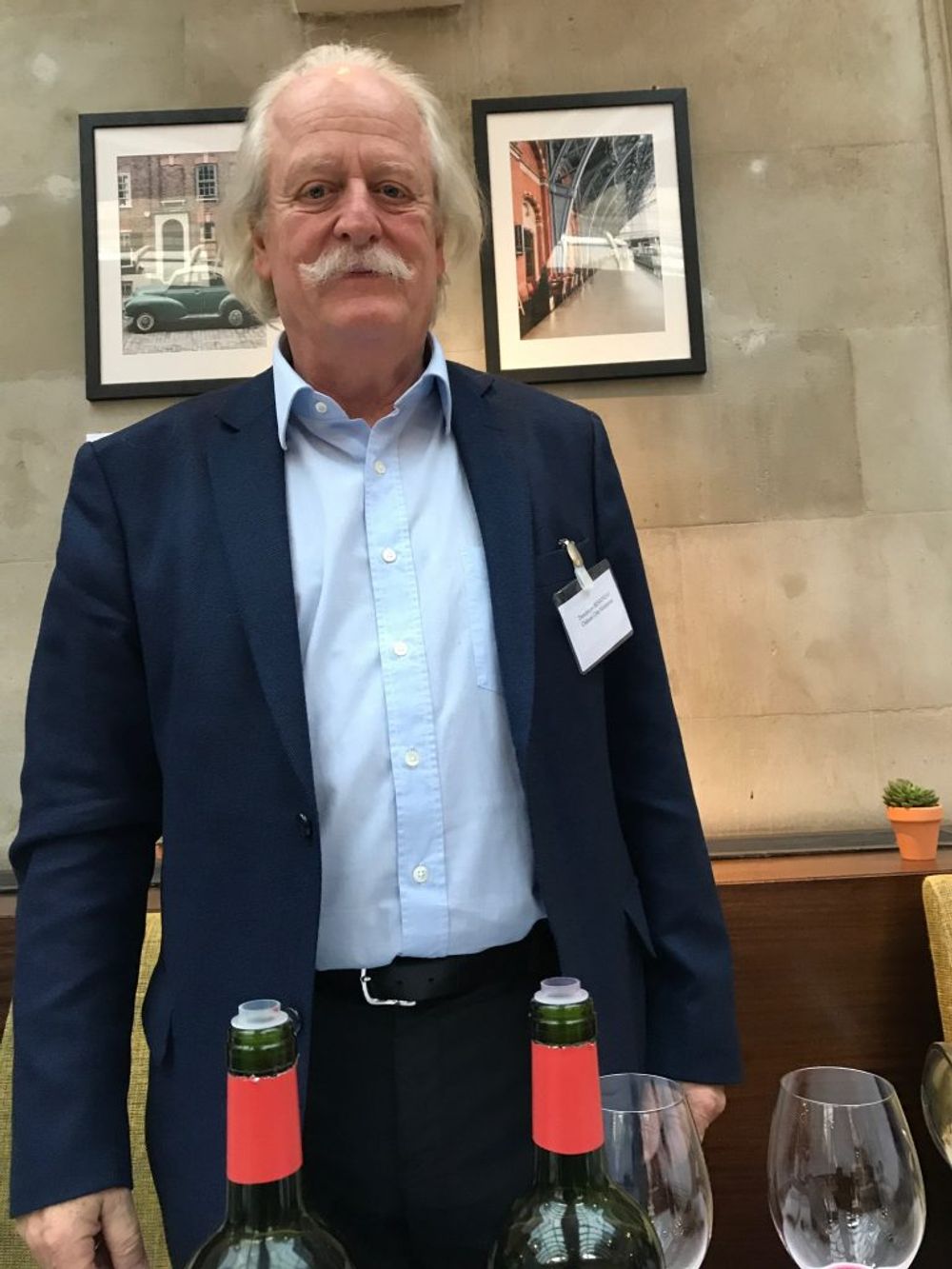
Dominique Bessineau of Château Côte Montpezat: 2017 is good, fruit-driven, but not as good as 2015
Everyone was agreed that this is an early drinking year and that you will be drinking Bordeaux 2017 before you drink Bordeaux 2015. In fact, to be honest, most of the wines tasted on the night you could quite happily drink now with food.
One owner described it as “2014 but better,” while others had brought along 2011 and 2012 to show the contrast and how similar vintages are developing.
Of course, as with all en primeurs, we are talking about very young wine indeed. If there is variation between the wines from different châteaux, there will be considerable difference between the wines shown now and how they will appear when bottled and after a year or two of ageing.
“What are the Bordeaux 2017 wines like? Too early to tell we are still processing them and ‘cooking’ with them,” was how one vigneron put it.
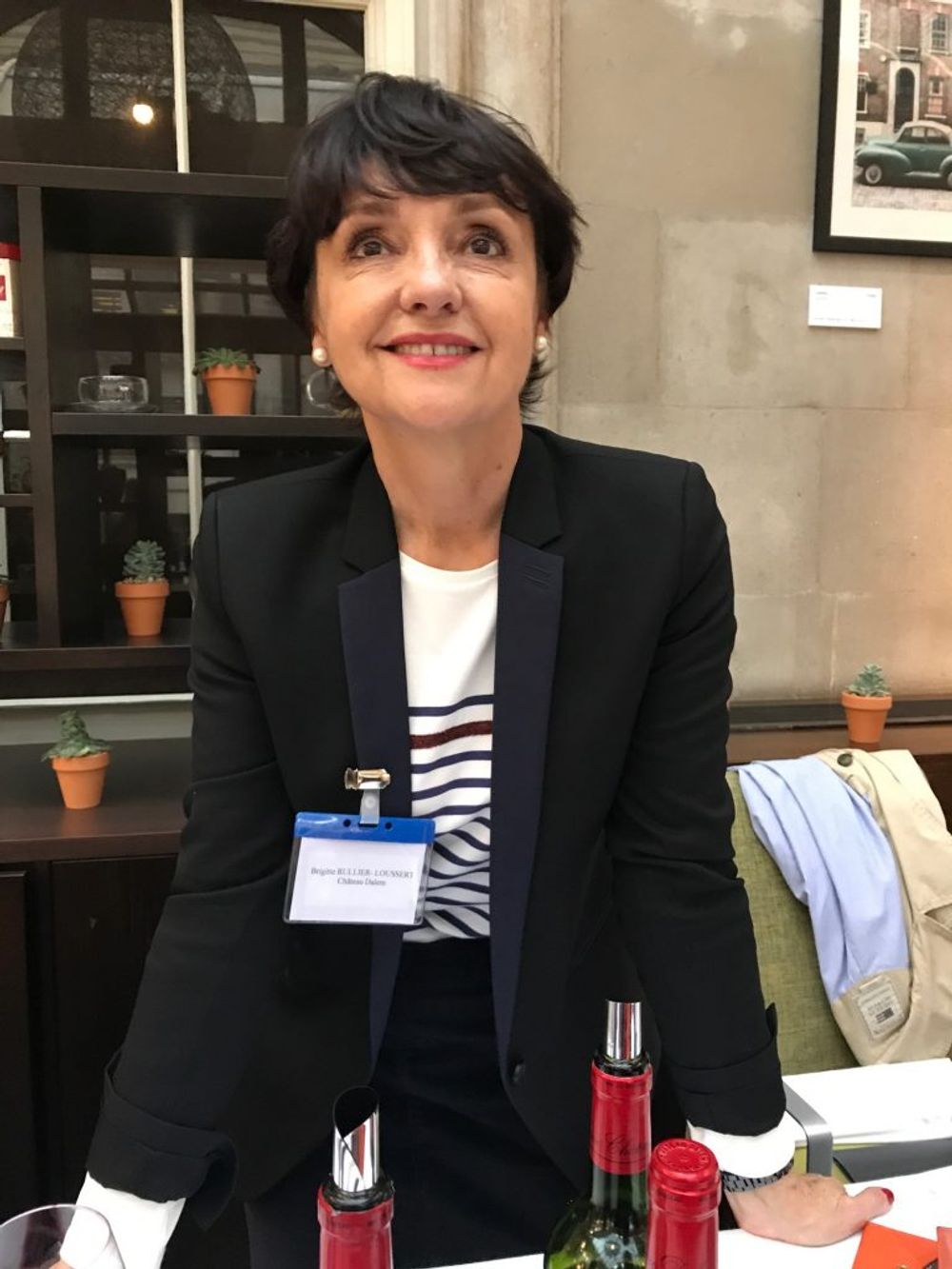
Brigitte Rullier-Loussert of Château Dalem: 2017 is a different style for them but still a good balance in the wine
The sales director of Jean Guyon’s seven Domaines Rollan de By estates felt that 2017 would be a difficult one to buy in because the sales strategies of different châteaux will be varying enormously, price obviously one consideration.
One observation I had was that with estates that have more than one wine it was always the grand vin that was being made over the second wine and not vice versa. A number of people told me that this was because the second wine was coming from vineyards that were of lesser quality and more susceptible to frost.
As for Guyon’s sales strategy of exporting direct without negociants (which came into effect three years ago), time will tell whether it will be able to achieve its aims of commanding higher prices or not. At present five of the seven estates are without UK distribution and it felt like a sign of the times to see Château Rollan De By and Château Greysac (once such a staple of Majestic) on offer here without a UK distributor.
There were a lot of good wines but ones that stood out on the night were:
Chardonerret, Château Peyredon Lagravette
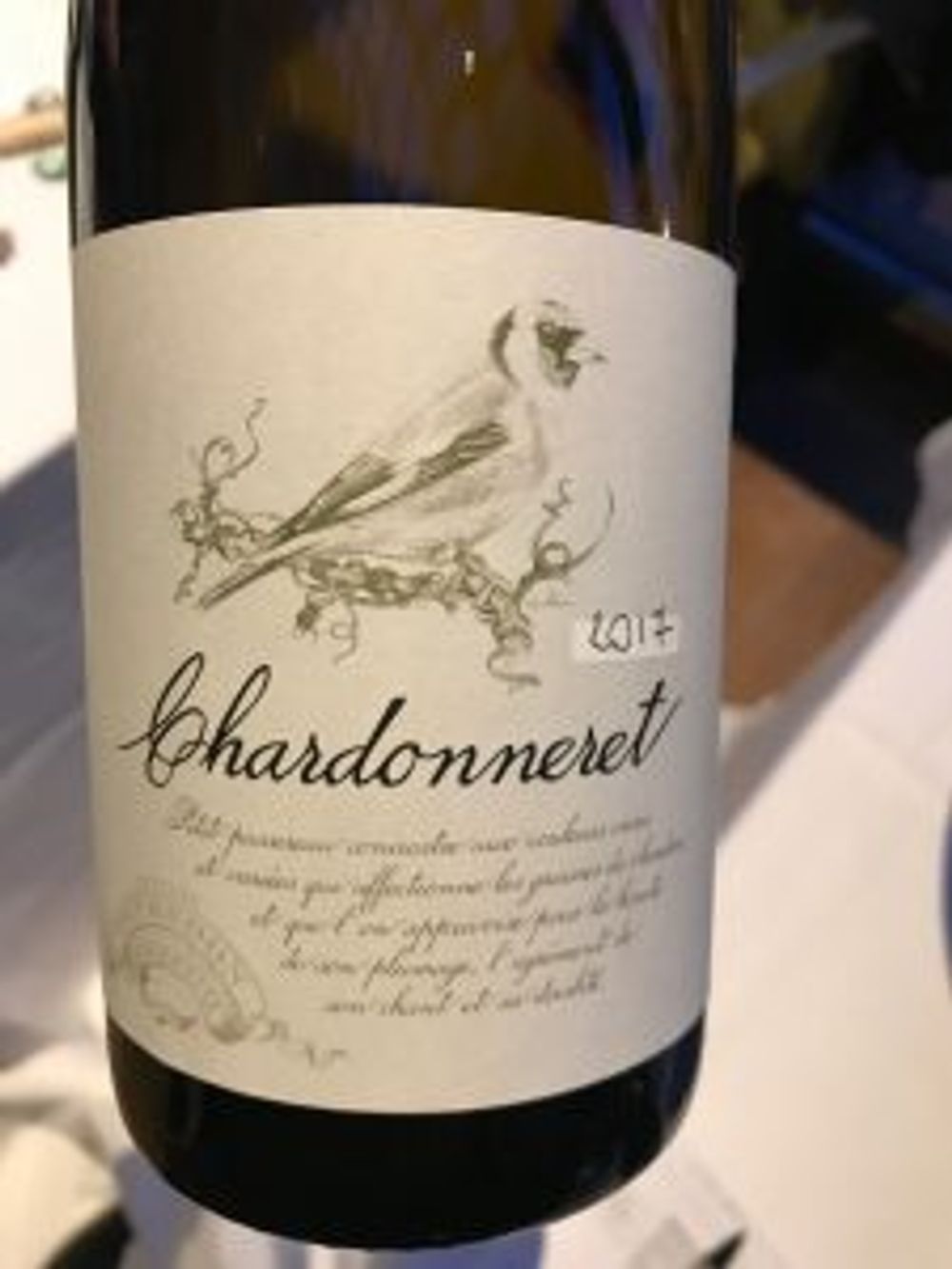
(80% Sauvignon Blanc 20% Sauvignon Gris)
A sommelier’s dream: unusual first vintage from a small parcel, utterly delicious white flowers/ herbal notes, careful oak treatment (six months in 4000 litre new oak), food-friendly texture, great label, wax seal. Someone needs to snaffle the distribution up for the UK.
Château de Cérons
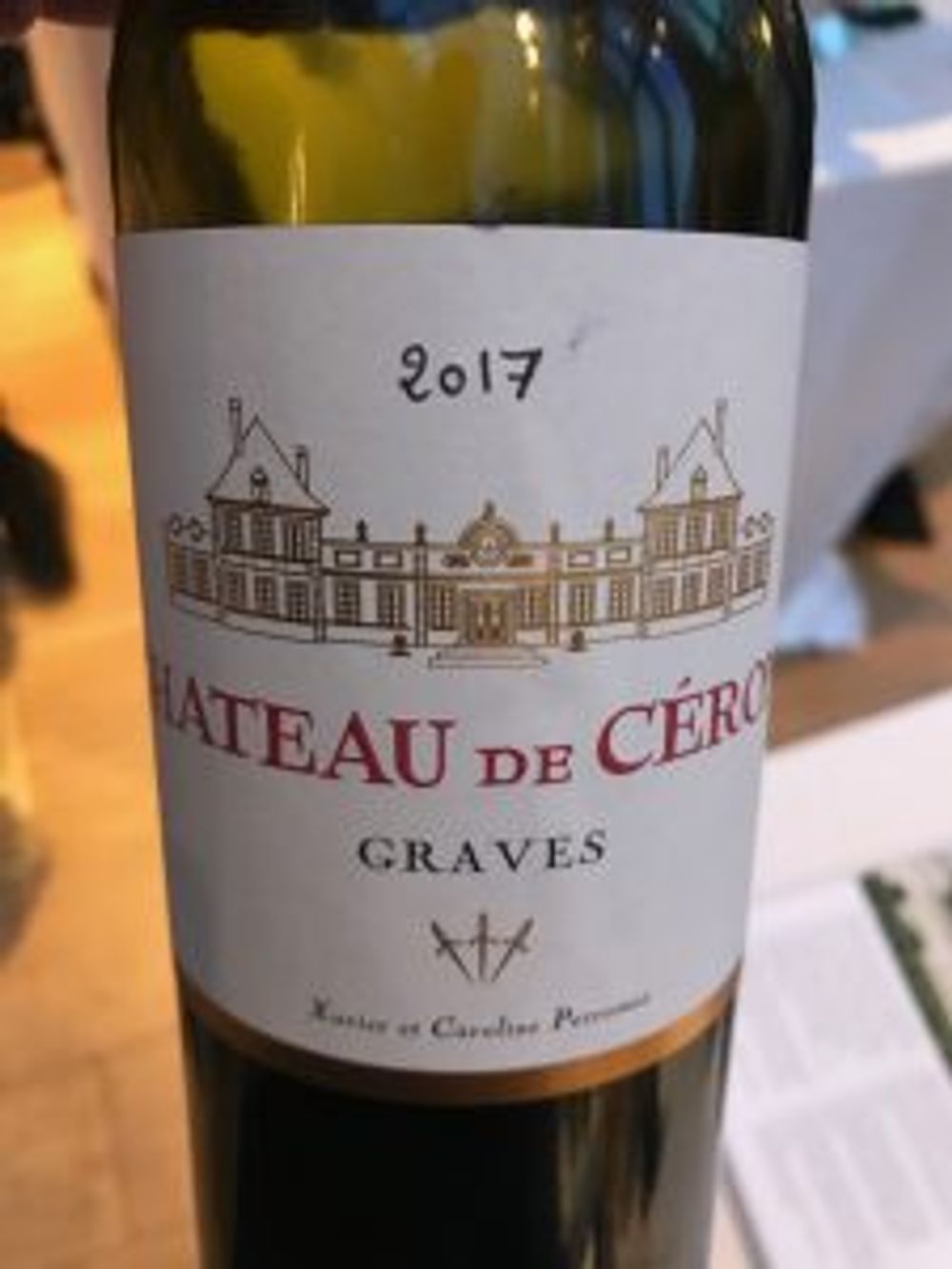
(70% Sémillon, 15% Sauvignon Blanc, 15% Sauvignon Gris)
Top marks for this estate releasing new and old stickies (2007 just being released) along with the changes they’ve made to the red. For me its white is a consistent winner year after year – fine wine, terrific poise, just gorgeous.
(50% Merlot, 43% Cabernet Sauvignon, 7% Cabernet Franc)
Bit more Cabernet Sauvignon in the blend than usual. Rich but not overripe, lovely velvety tannins. Classic Saint-Estèphe.
(65% Merlot, 35% Cabernet Sauvignon)
Wonderful freshness and balance achieved here on the Montagne Saint-Emilion.
Château Dalem, Fronsac

(85% Merlot, 15% Cabernet Franc)
Slightly different style to their usual blend but still wonderfully fresh with crunchy blueberry fruit and high acidity and tannin keeping the power of the fruit in check. Consistent achiever of an estate.
(75% Merlot, 20% Cabernet Franc, 5% Cabernet Sauvignon)
Super wine – nose of lifted black fruit, terrific balance. Might need to put your skates on if you want some.
(84% Merlot, 8% Cabernet Franc, 6% Cabernet Sauvignon, 2% Malbec)
Their second wine wasn’t showing well but could have been to its infancy. The grand vin was terrific with nice herbal notes of fresh herbs, and chunky structure.
